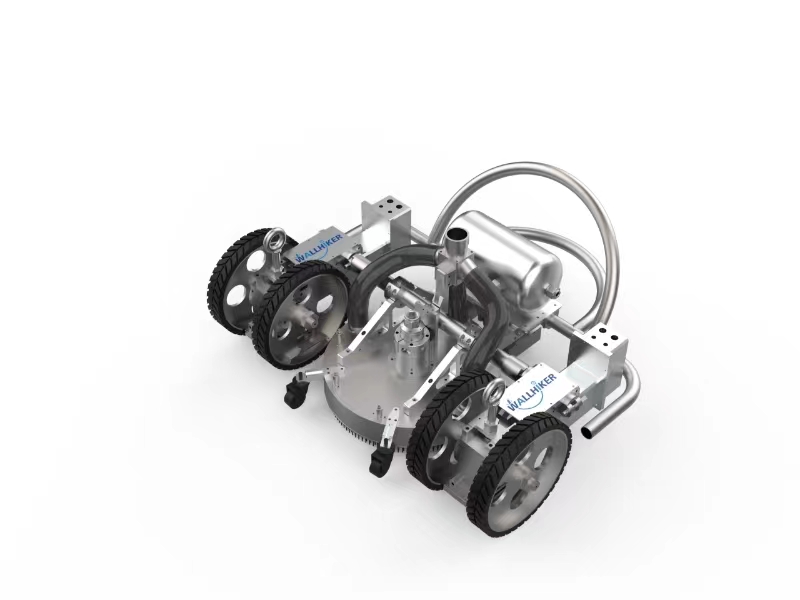Magnetic crawler robots are groundbreaking innovations designed to address the challenges of inspection, maintenance, and repairs in various industries. From shipbuilding and oil refineries to power plants and infrastructure, these robots offer a versatile and efficient solution for accessing hard-to-reach areas on metallic surfaces.
The key to a magnetic crawler robot’s functionality is its magnetic adhesion system, typically consisting of powerful permanent magnets or electromagnets that create a strong, reliable connection with the metal surface. The robot is fitted with motorized tracks or wheels to ensure smooth, precise movement across various surfaces, whether they are flat, curved, or irregular.In addition to the magnetic system, these robots often come equipped with high-resolution cameras and various sensors for real-time data collection. This allows operators to remotely monitor the robot's progress, assess the condition of the surface, and make decisions based on live feedback. Some models can also be fitted with additional tools for specific tasks, such as ultrasonic testing probes, cleaning brushes, or welding systems.

The adoption of the magnetic crawler robot offers several advantages to industries that rely on metallic structures. Some of the most significant benefits include:
1. Enhanced Safety
One of the primary advantages of using magnetic crawler robots is the significant improvement in safety. By removing the need for workers to operate at heights or in hazardous environments, these robots reduce the risk of accidents and injuries. Operators can control the robots remotely from a safe distance, ensuring that tasks like inspections and repairs are performed with minimal human exposure to dangerous conditions.
2. Cost Efficiency
Magnetic crawler robots provide a cost-effective alternative to traditional access methods, such as scaffolding or cranes. They reduce labor costs by automating tasks that would otherwise require a large workforce. Additionally, because they allow for inspections and repairs to be conducted without shutting down operations, industries experience less downtime, further reducing costs.
3. Precision and Accuracy
With advanced sensors and high-resolution cameras, magnetic crawler robots can provide precise and accurate data during inspections. Their ability to reach tight spaces and navigate complex surfaces ensures that no area is left unchecked, helping industries detect problems early and prevent costly repairs down the line.
4. Versatility
Magnetic crawler robots are designed to operate on a wide range of surfaces, making them highly versatile tools. Whether they are used for inspection, welding, cleaning, or maintenance, these robots can adapt to various environments and industries, offering a comprehensive solution to metal surface challenges.
As technology continues to advance, magnetic crawler robots are expected to become even more capable and adaptable. Future developments may include improvements in artificial intelligence and machine learning, allowing these robots to operate autonomously, perform complex tasks, and provide predictive maintenance insights. Furthermore, as industries seek more sustainable and efficient solutions, the use of these robots is likely to expand, driving innovation and reshaping the way inspections and repairs are conducted.